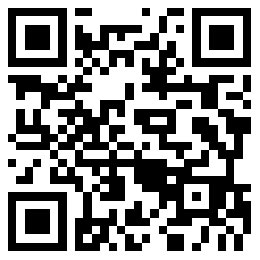“自拍”何以變成社會流行病
|
????和許多社會變革一樣,,自拍的興起也始于科技的變革。在20世紀(jì)的大部分時間里,,照相都是一件非常昂貴的事情,。要想看到定格在相片上的瞬間,必須經(jīng)歷漫長的等待,。業(yè)余攝影師們必須得購買好多卷膠卷,,拍完后要把膠卷送到暗房里沖洗。在90年代末期,,數(shù)碼相機使得拍照變得更加經(jīng)濟,,不論拍照、回看還是刪除圖像都非常方便,。隨后,,寬帶網(wǎng)絡(luò)取代撥號網(wǎng)絡(luò)走進(jìn)千家萬戶,使人們擁有了更快速的網(wǎng)絡(luò)體驗,。第一個主流社交網(wǎng)絡(luò)開始走紅,。MySpace使“爆照”流行起來。到2004年,,“自拍”標(biāo)簽開始在Flickr上出現(xiàn),。 ???2007年,史蒂夫?喬布斯推出iPhone,。有史以來,,我們第一次可以把照相機放在我們的口袋里。照片的拍攝和分享變得容易無比,,你既可以通過短消息和電子郵件指定發(fā)給某個人,,也可以把它上傳到社交網(wǎng)絡(luò)。到了2010年,,就在Skype和蘋果的Facetime開始支持視頻聊天服務(wù)的同時,,蘋果發(fā)布了帶前置攝像頭的iPhone 4,蘋果的用戶們開始拍攝自己的照片,。 ????要想明白為什么,,大家不妨想想這些工具是如何改變照相本身的。它們創(chuàng)造了海量相片,。根據(jù)瑪麗?米克的《2014互聯(lián)網(wǎng)趨勢報告》,,5年前,,我們每天在網(wǎng)絡(luò)上分享的照片大約在5000萬張左右,其中大部分照片被上傳到Facebook上,。如今,,我們每天分享的照片多達(dá)18億張。就像我最近在為《財富》撰寫的《圖像的未來》(the Future of the Image)系列文章中所說的那樣,,照片已經(jīng)具有了“用完即棄”的特點,。就像書寫語言一樣,它們被拼湊起來,,成了交流的工具,。 ????自拍在當(dāng)代已經(jīng)成了表達(dá)信息的一種完美載體——畢竟面部表情是語言交流的一個最重要的部分。比如去年12月,,一架載有費迪南德?普恩特斯等8人的小飛機在夏威夷沿岸墜毀,。普恩特斯掉進(jìn)海中的第一件事,竟然是翻出他的GoPro相機,,自拍了一張他在海中半浮半沉的照片,,飛機已經(jīng)完全扎入海中,只有機尾還露在外面,。這位“淡定帝”的照片相當(dāng)于一種宣言:“我在這兒,,當(dāng)時的感覺就是這樣的?!?/p> ????自拍的流行還帶來了另外一些福利,。去年一批新型圖像應(yīng)用為照片分享提供了更短期的載體。其中最有代表性的就是“閱后即焚”的Snapchat,,用戶互發(fā)圖片后,,在對方看到的10秒鐘后就會自動消失。Snapchat的用戶大部分都是十幾歲的青少年,,目前他們上傳的照片超過7億張,。 ????當(dāng)然,這個詞自身或許只是一時的狂熱,。再過幾年往回看,,如今很流行的斜上45度角、嘟嘴剪刀手之類的自拍造型,,可能跟我們看高腰褲,、墊肩這種東西一樣覺得過時了——當(dāng)然也包括那些我們用來拍照和分享照片的工具。攝像頭會被安裝到眼鏡,、手表,、汽車甚至是任何你能想象得到的東西里,。Snapchat和Instagram可能會被Whatsapp和微信(Wechat)取代,。但是捕捉自己的影像作為溝通方式的做法還會延續(xù)下去,。評論人蘇珊?桑塔格在她1977年的作品《論攝影》(On Photography)中寫道:“人們有照相的沖動沒什么錯,因為可以把經(jīng)歷變成一種視覺,。今天所有東西的存在,,都是為了被裝進(jìn)照片里?!奔仁撬袞|西,,也包括所有人。(財富中文網(wǎng)) ????譯者:樸成奎 |
?????Like so many social changes, the rise of the selfie begins with a shift in technology. For most of the twentieth century, photography was expensive and the gratification of capturing a moment was subject to lengthy delay. That was back when amateur photographers purchased roles of film, and sent those roles to labs for processing. In the late ’90s, digital cameras changed the economics of photography, making it easy to click, review and erase images. Then broadband replaced dial-up Internet service in homes, allowing people a faster online experience. The first mainstream social networks began to take off. MySpace popularized the profile pic, and by 2004, images tagged #selfie began to appear on Flickr. ???In 2007, Steve Jobs introduced the iPhone; for the first time, we began carrying cameras around in our pockets. Pictures were easily snapped and shared, either privately by text message and email, or by uploading them to social networks. Then in 2010, in an effort to support video chatting services like Skype and Apple’s own Facetime, Apple released a new version of the iPhone 4 with a front-facing camera. Apple’s users began snapping photos of themselves. ????To understand why, consider how these tools have changed the nature of the photograph itself. They’ve created an abundance of images. Five years ago, we shared somewhere close to 50 million photos daily, mostly on Facebook, according to Mary Meeker’s 2014 Internet Trends Report. Today, we share 1.8 billion photos daily. As I recently wrote in the opening to my series of the Future of the Image, photos have taken on a disposable quality. Much like written language, they are pieced together and used to communicate. ????The modern selfie is the perfect vehicle for a message—facial expression, after all, is the most critical element to verbal communication. In December, for example, when the small plane carrying Ferdinand Puentes and eight others crashed into the sea off the coast of Hawaii, Puentes flipped on his GoPro camera, and as he bobbed in the water, captured a photo of himself as the tail of the plane rose out of the sea above his right shoulder. Terror screamed across his eyebrows, his photo announcing, “I was here, and this is how it felt.” ????Another boon for the selfie explosion: In the past year, an emerging group of apps have offered more temporary vehicles for photo-sharing. The most popular is Snapchat, the disappearing photo app that lets its users—mostly teens—send photos to each other, setting a timer for them so that they (ostensibly) disappear in less than ten seconds. Snapchat users, who are mostly teens, currently upload more than 700 million photos to the service each day. ????To be sure, the word itself is a bit of a fad. Like high-rise jeans and shoulder pads, this early form of the genre—camera positioned 45 degrees above our heads, pouty lips, the hint of an outstretched arm in the foreground—may look as dated to our future selves as the tools we use to take and share them. Cameras will creep into glasses, watches, cars, and just about everything else you can imagine. Snapchat and Instagram may give way to Whatsapp and Wechat. But the act of capturing ourselves visually as a way to communicate will only grow. “It would not be wrong to speak of people having a compulsion to photograph: to turn experience itself into a way of seeing,” wrote the critic Susan Sontag in her seminal 1977 work, On Photography, adding, “Today everything exists to end in a photograph.” Everything, and also, everyone. |
-
熱讀文章
-
熱門視頻











